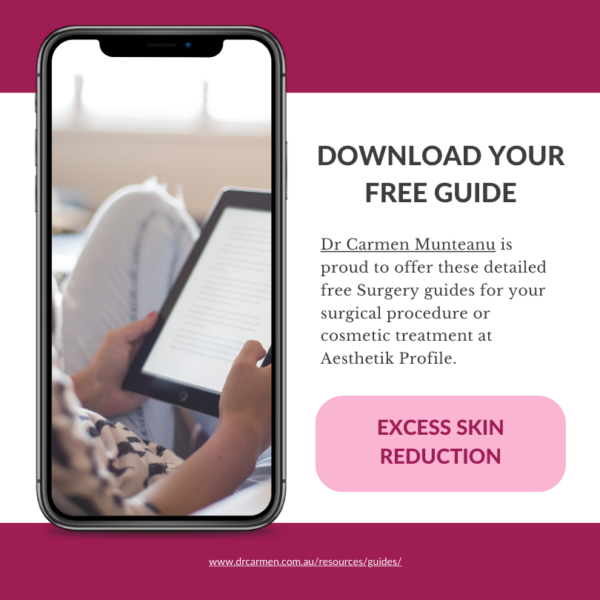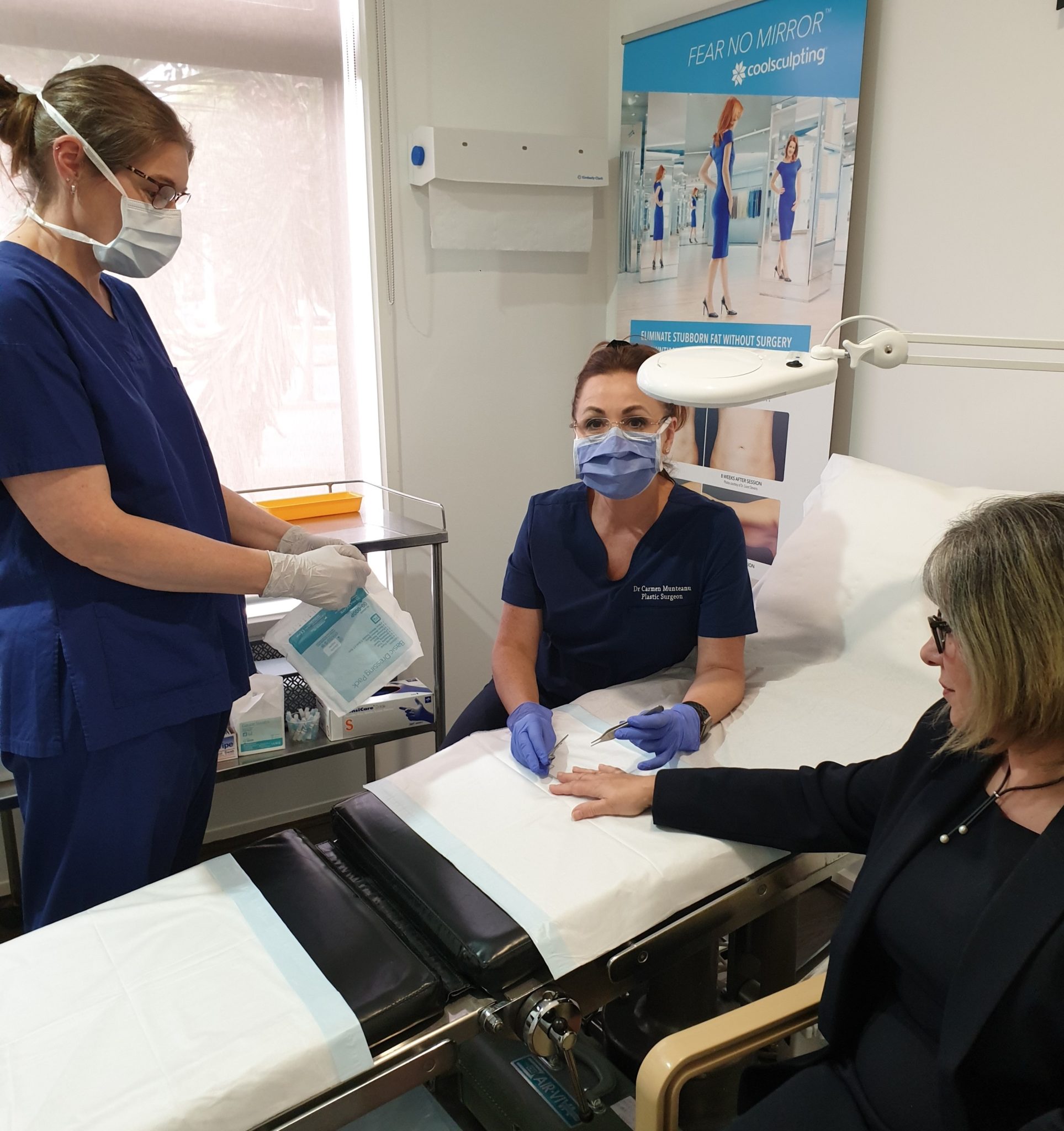Dealing with Excess Belly Fat around your middle. Why a big stomach is harmful and what can be done about it.
Increasing studies show that having extra fat around our middle torso areas (known as “visceral fat” or extra belly fat) is far more harmful than simply being overweight.
So why is having excess fat around your belly areas so damaging to your health and well-being?
Excess belly fat (body fat around the waistline) is called everything from a ‘muffin top’ to a ‘tummy pouch’ to a ‘beer gut’ or ‘pot belly.’
It’s long been known to be a problem, but the research continually affirms that excess belly fat is linked with significant health issues.
Fat around the middle is known to maximize your risks of having life-threatening heart diseases, as well as Type II Diabetes, high blood pressure, stroke – and even cancers such as breast cancer.
Whilst there is often a genetic component to fat distribution patterns on our physiques, lifestyle factors do come into play in relation to belly fat.
Men and women tend to store body fat a bit differently. Yet both may readily have fatty deposits around their middle torso or abdominal areas, particularly as they age or experience hormonal changes.
Some people seem to gain weight only in one area of the body, whilst others gain weight all over their bodies
- For some of us, our belly area may seem to be the primary area where excess body fat becomes ‘stored’ on our bodies.
- Our belly area might even seem like the ONLY part of our bodies where fat accumulates.
- But for others, the stomach or belly area are only one of several areas that are prone to exercise-resistant, excess fat deposits.

Genetics, Hormones and Lifestyles interact to impact your BMI levels and your belly fat distribution
Excess fat around our middle areas may accumulate partially due to your genetics and partially in relation to lifestyle factors, including chronic illnesses, medication side effects or major life events such as having children, working at a sit-down job or becoming overly sedentary.
Belly fat can also relate to not getting enough exercise and having a higher food intake than is actually needed – or even eating the wrong types of foods.Child-bearing & Pregnancy – Residual Fat In the Abdominal Area
For women of childbearing age, fat might generally be distributed around the buttocks, hips and breasts – areas in which having extra fat may help maximise chances of reproduction and childbirth.
Pregnancy and childbirth, however, often leave behind some stubborn, unappealing belly fat.
Some women find their post-baby bodies quite challenging, particularly women who were quite fit and active prior to having children. They might consider surgery or liposuction simply to feel great about their bodies again or to look fantastic in their favourite styles of pre-baby body clothing. Other women aren’t overly concerned about their mid-section weight changes after having babies; but if they understand the potential health risks of having excess fat around their belly and middle torso areas, they might be inspired to try to do something positive to change it. Potential changes might be exercising more regularly, eating healthier foods or using smaller portion sizes, and seeing their GP or specialist if their weight fluctuates a lot or was steadily increasing over the years towards potential obesity or dangerous cholesterol or blood pressure levels.
For older individuals, hormonal changes such as menopause (women) or testosterone/androgen deficiency (men) can also change the body’s fat storage and fat distribution across the body. In fact, obesity and changing hormone levels appear strongly linked. And nearly everyone’s heard of the ‘middle age’ spread that affects women and men, typically by their fourth or fifth decade of life.
Another important factor linked with stomach fat is hormonal changes including menopause and androgen/testosterone deficiency concerns.
Changing hormone levels at any juncture of life can make a significant difference in your body’s metabolic processes, as well as interact with other obesity causing factors. Hormones can impact your BMI (Body Mass Index) and your MFR (muscle-to-fat ratio) as well as influence where excess body fat is distributed on your body.
But more importantly than how having excess belly fat might look, there are actually health risks to having a high volume of concentrated fat around your middle torso/abdominal area.
Because of the high risks connected to visceral fat, it is quite important to find an effective strategy to reduce it.
So how do you actually DO that?
One way is to eliminate, or reduce, stress and stress reactions.
Stress is now thought to be one of the major causes of weight increases around the middle.
Why stress is more significant in modern times and how it leads to storage of belly fat
Unlike decades ago when our bodies could react quickly to danger, these days we seem to be under near-constant “chronic” stress. With 24/7 access to technology (and with other’s nearly 24/7 access to us), and news events shared globally, we can become inundated with stress-producing concerns.
Our lives might not be in danger if we’re late to work or in picking up our children from school or childcare. But our body processes cannot actually differentiate between stressors.
We can’t, internally, seem to differentiate between debts, late trains, work pressure and actual life-threatening stress – meaning we’re potentially under more chronic stress, and more varied types of stressors, than our ancestors ever were in the past.
So how are stress and belly fat related?
When we experience (or react to) stress, the cortisol hormone levels remain high in our bloodstreams. (Cortisol hormones come from your adrenal cortex).
- This can increase our appetites.
- This is often called ‘stress eating‘
- Not all of us eat when we are stressed, but many of us are quite familiar with the term
- If we also lack sleep because we’re stressed, it is also likely that we’ll eat more than we should
- When our cortisol levels remain high, our body thinks it should refuel itself and add more energy into the system – e.g., by eating foods.
- If the body DOES react fast to release adrenaline under stress, glucose and fat are deposited as fat around our middle abdominal area (which can result in accumulating belly fat).
Fat targets the belly as an ideal storage place. Why? Because it is close to the liver, meaning fast conversion of the fat – back into energy – can occur if needed.
Also, women undergoing or past the menopausal changes of life can be some of the hardest hit by the accumulation of body fat around their middle torso area.
This is because there is a low proportion of fat to muscle transformation, due to low estrogen production – hence there is more fat ready to be deposited in the body instead of muscle (this is why strength training to increase the muscle mass on your body can help you maintain a stronger, healthier physique after menopause).
Solution for belly fat reduction
Regular exercise is a major and effective method of dealing with belly fat (visceral fat) and increasing your metabolic rate.
Swimming, jogging and cycling have proven to be more fruitful than other forms of less intensive exercise in the process of burning extra calories. But even waking on a regular basis can help.
Plus, some exercises are high impact, and if you’ve been sedentary or are overweight, you’ll need to get an expert’s advice and your GP’s clearance before exercising.
The reason more robust exercise is often necessary for some women to help reduce belly fat, however, is that the estrogen that was needed to maximize fat metabolism cannot be attained after menopause. So if you can exercise and burn enough kilojoules on a daily basis, you can sometimes help eradicate that issue. It’s similar for men, as well, if they suffer androgen or testosterone reductions as they age; exercise can really help.
Muscle building (weight-bearing, strength-building exercises), as above, can also be highly effective in reducing belly fat and improving your lean body mass or muscle-to-fat ratio. With more muscle mass on your body, your metabolism will go up, and your muscle-to-fat ratio will be improved, resulting in a firmer-looking body and greater strength.
A better nutritional plan and moderate portion sizes can also help you to deal with visceral fat.
You’ll want a diet that helps raise your metabolism rate and nurtures your body at the same time. Calcium, and possibly Vitamin D, is believed to be essential to uplift your metabolism. Fruits and vegetables have low fat and calories hence necessary to minimize fat accumulation.
The impact of ageing on body fat distribution, BMI and excess belly fat
For many of us, ageing is a major cause of increased distribution of body fat across our physiques.
Fat is unevenly created; and the subcutaneous fat, located above the abdominal muscle wall and under the skin or your protective dermal layer, is often resistance to change by exercise and diet alone.
Solution: Body Lift or Body Contouring Surgery, sometimes combined with Liposuction or excess skin removal, can often help you reduce subcutaneous belly fat or abdominal area fat stores which have been resistant to change via exercise and better nutrition
Surgery and Liposuction are sometimes an option for people who are wanting to remove excess fat from around the abdominal area. First, however, you’d have to reach a stable body weight and be willing to prepare for surgery and post-op recovery. If you’ve tried everything else to try to reduce your belly fat and are fit and healthy, or within 10 kilos of your ideal weight, you can send an enquiry form (or phone 03 8849 1462) to schedule a consultation to discuss the suitability of a body contouring or liposuction procedure.
- Body Contouring Surgery and Liposuction and meant to upgrade or refine the shape of the body
- Surgery is not to be considered as a substitute for exercise or good nutrition or as an alternative to losing weight
- you’re considering this option, it will be important to maintain a stable body weight to help prevent uneven distribution of fat and to maintain good body contouring surgery results.
Summary
When it comes to excess belly fat – having babies, living a stressful but sedentary lifestyle, hormonal changes and other ageing-related processes can ALL contribute to excess body fat around your “middle” torso (abdominal) area.
The health risks of having excess body fat around your belly – or of moving towards obesity – can be mediated with a healthier lifestyle including more exercise, improved nutrition and a reduction of stress (or stress reactions).
For stubborn fat that is distributed around your middle torso, you can also consider surgical options for reduction of the belly fat – such as body contouring or liposuction – so long as you are a suitable candidate meaning that you are in good health, have realistic expectations, follow a healthy exercise and nutritional regime and are doing all else YOU can to live a healthier, belly-fat free lifestyle.
Interested in a Consultation with a Specialist Plastic Surgeon who can help you re-contour your body including reducing excess belly fat, stomach flab and redundant skin after weight loss?
Contact Dr Carmen’s team for help.
Further Reading about Dr Carmen’s Plastic Surgery
- Read Dr Carmen’s blog What is Apronectomy?
- Read the New Cosmetic Surgery Regulations starting 1st July 2023
Further Reading about Body Procedures with Dr Carmen
- Read Dr Carmen’s Blog about Compression Garments after Body Lift
- Read Dr Carmen’s Blog about How Can I Reduce Swelling and Bruising After Body Lift Surgery
- Read Dr Carmen’s Blog about How to Reduce Scars after Body Lift Surgery


